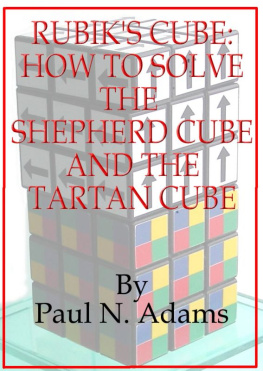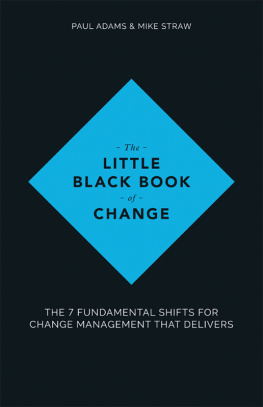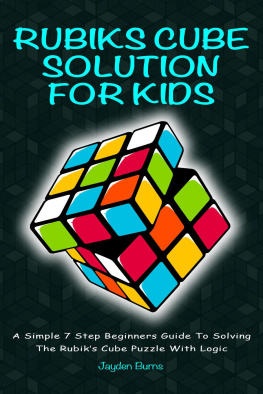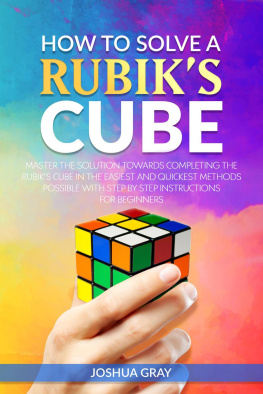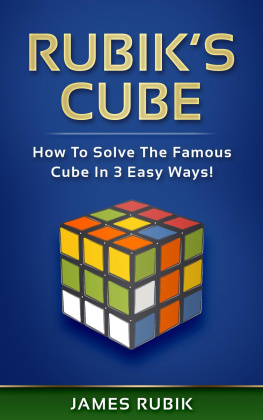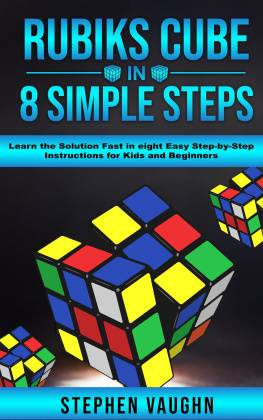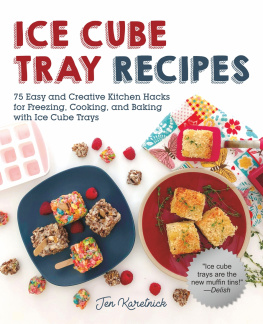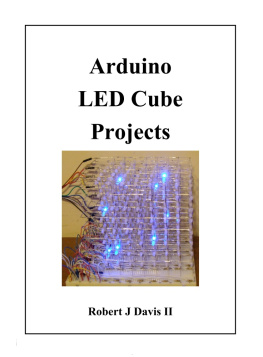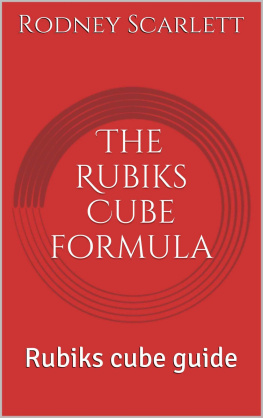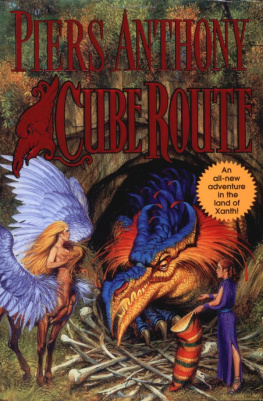Paul Adams - Rubiks Cube: How to Solve the Shepherd Cube and Tartan Cube
Here you can read online Paul Adams - Rubiks Cube: How to Solve the Shepherd Cube and Tartan Cube full text of the book (entire story) in english for free. Download pdf and epub, get meaning, cover and reviews about this ebook. year: 2009, publisher: Paul Adams, genre: Children. Description of the work, (preface) as well as reviews are available. Best literature library LitArk.com created for fans of good reading and offers a wide selection of genres:
Romance novel
Science fiction
Adventure
Detective
Science
History
Home and family
Prose
Art
Politics
Computer
Non-fiction
Religion
Business
Children
Humor
Choose a favorite category and find really read worthwhile books. Enjoy immersion in the world of imagination, feel the emotions of the characters or learn something new for yourself, make an fascinating discovery.
- Book:Rubiks Cube: How to Solve the Shepherd Cube and Tartan Cube
- Author:
- Publisher:Paul Adams
- Genre:
- Year:2009
- Rating:5 / 5
- Favourites:Add to favourites
- Your mark:
- 100
- 1
- 2
- 3
- 4
- 5
Rubiks Cube: How to Solve the Shepherd Cube and Tartan Cube: summary, description and annotation
We offer to read an annotation, description, summary or preface (depends on what the author of the book "Rubiks Cube: How to Solve the Shepherd Cube and Tartan Cube" wrote himself). If you haven't found the necessary information about the book — write in the comments, we will try to find it.
Rubiks Cube: How to Solve the Shepherd Cube and Tartan Cube — read online for free the complete book (whole text) full work
Below is the text of the book, divided by pages. System saving the place of the last page read, allows you to conveniently read the book "Rubiks Cube: How to Solve the Shepherd Cube and Tartan Cube" online for free, without having to search again every time where you left off. Put a bookmark, and you can go to the page where you finished reading at any time.
Font size:
Interval:
Bookmark:
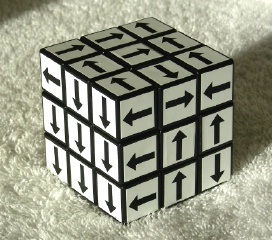
C. Three " matchable" corner pieces, each ofwhich has or could have the up face aligned (either left/right orup/down) with the up center and edge pieces. It might sound complexbut visually it's obvious: either the arrow blends in or it's atright angles and stands out as wrong. No further description ofthis kind of corner cubie is necessary.
11. Do the usualclockwise/counterclockwise twists to solve the corners. There isonly one difference you will frequently run into: everythingappears solved except for one corner, which needs to be twistedclockwise or counterclockwise. Use a "samie " as the other cubie of the pair andtwist as normal.
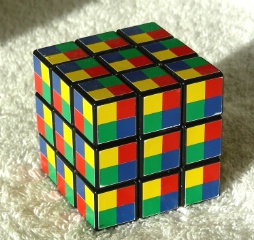
1. A Tartan cube, asinvented by Dan Hoey, is a regular 3x3x3 Rubik ' s cube, except that each of thefifty-four cubie faces is divided into quarters, with one of thecolors red, green, yellow, blue in each corner. Each of the sixfaces has these four colors in different positions, with each cubieface on one cube face looking the same. When solved, the cube couldbe oriented so that each cubie in the top face reads green, yellow,red, blue when reading top left, top right, bottom left, bottomright respectively. The other faces are oriented as in step7.
Font size:
Interval:
Bookmark:
Similar books «Rubiks Cube: How to Solve the Shepherd Cube and Tartan Cube»
Look at similar books to Rubiks Cube: How to Solve the Shepherd Cube and Tartan Cube. We have selected literature similar in name and meaning in the hope of providing readers with more options to find new, interesting, not yet read works.
Discussion, reviews of the book Rubiks Cube: How to Solve the Shepherd Cube and Tartan Cube and just readers' own opinions. Leave your comments, write what you think about the work, its meaning or the main characters. Specify what exactly you liked and what you didn't like, and why you think so.

